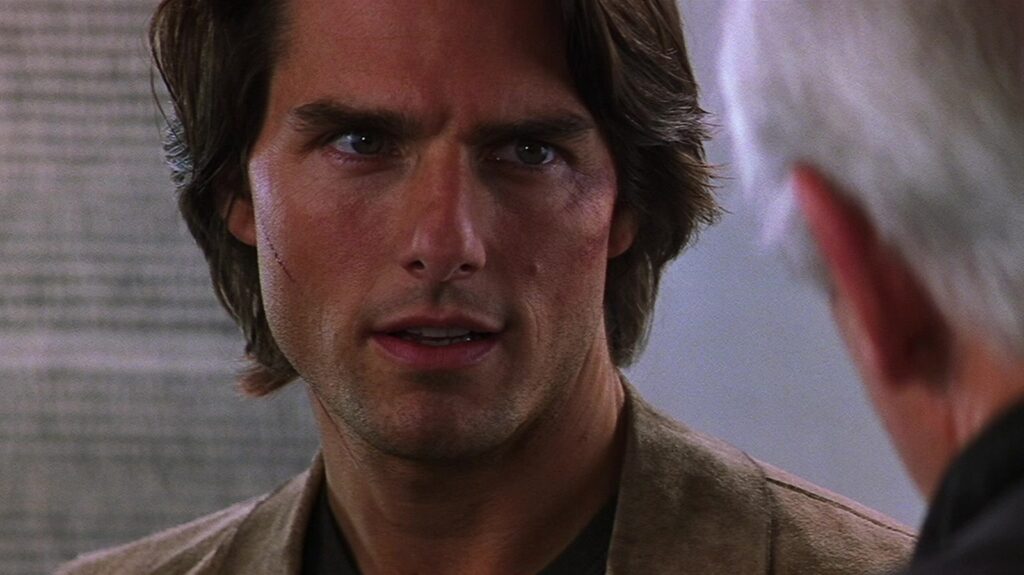
The preview for the eighth Tom Cruise-starring “Mission: Impossible” movie was released on November 11, 2024, and it looks to be the final film Cruise will be involved with. Titled “Mission: Impossible – The Final Reckoning,” the preview is full of portent and global threats that, perhaps naturally, only Ethan Hunt can quell. The story, it seems, will continue directly from “Mission: Impossible – Dead Reckoning, Part One” (the “Part One” has since been dropped) as it follows Hunt’s rivalry with a dangerous artificial intelligence broadcasting from a lost submarine somewhere in the Arctic Ocean.
Since 1996, the “Mission: Impossible” movies have been gigantic cinematic events, with each one drawing huge crowds, and allowing Tom Cruise to increasingly assert his influence over their creative elements. Cruise doesn’t write or direct, but a lot of the direction, editing, casting, and music rests in his hands. Brian De Palma’s 1996 original is downright quaint compared to what the series became, which was an expanding showcase for stunts and action. Cruise has performed more and more dangerous acts for each progressive film; in the last one, he drove a motorcycle off a cliff and then sprung a parachute just in time.
Not all of the “Mission: Impossible” movies are good, however. Brad Bird’s “Mission: Impossible – Ghost Protocol” (2011) is impossible to follow, and isn’t memorable beyond its showcase climbing sequence up the side of the Burj Khalifa. Christopher McQuarrie’s “Dead Reckoning” (2023) was filmed during COVID lockdowns, and actors had to be filmed separately, leading to weird editing and way too many close-ups.
The worst of the bunch, as both critics and users of IMDb can agree, is John Woo’s “Mission: Impossible 2” (2000). The film only has a 56% approval rating on Rotten Tomatoes (based on 155 reviews) and IMDb users gave it, overall, a 6.1 out of 10.
‘Mission: Impossible 2’ is easily the worst of the ‘Mission: Impossible’ movies
“Mission: Impossible 2” is the worst film in its series by a substantial margin. Director John Woo was, at the time, renowned for the balletic gunfight sequences in his films “Hard Boiled” and “The Killer,” and for big, silly American actioners like “Hard Target” and “Face/Off.” Ordinarily a master of hyper-stylized violence, Woo seemed adrift with “Mission: Impossible 2,” unsure how weird he wanted the action to be, or what the focus of the story was. Was the romance between Ethan Hunt and Nyah (Thandiwe Newton) the heart of the movie, or was it a rivalry between Hunt and the generic villain Sean Ambrose (Dougray Scott)?
The central story focuses on a deadly, potentially apocalyptic virus called Chimera, and Ethan has to track down both the virus and its cure, nicknamed Bellerophon. The Impossible Missions Force (this time represented by Anthony Hopkins) knows that Ambrose has access to them and that they can get to Ambrose through his ex, Nyah. Naturally, Nyah and Ethan develop a romantic regard. “Impossible 2” climaxes with a gun/motorcycle battle, and it features a notorious scene wherein Cruise and Scott charge their motorcycles toward each other, only to leap off and fly through the air, firing their weapons. It’s one of the stupidest sights in modern action.
Users on IMDb were plentiful, and 115,000 people graded the film at a 6, and another 92,000 rated it at a 7. It seems the majority of people who bother to leave ratings on IMDb find the film to be merely okay, or even passable. 111,600 users, however, rated the film a 5 or less. A quick look through user reviews finds that many found the action to be fun, but the writing (by Robert Towne, with a story by Ronald D. Moore and Brannon Braga!) to be underwhelming. Some didn’t like that Ethan Hunt had become superhuman, able to be shot multiple times without showing any pain.
What the critics thought of ‘Mission: Impossible 2’
David Ansen, writing for Newsweek, pointed out that “Mission: Impossible 2” was as slick as any expensive Hollywood blockbuster, but also that it was dull, writing that “the tongue-in-cheek style suits neither Cruise’s earnest, muscular emoting nor Woo’s supercharged balletic carnage, and is quickly dropped.” Dennis Harvey’s review in Variety said that Woo’s film “pushes the envelope in terms of just how much flashy packaging an audience will buy when there’s absolutely nada inside.” He argued that the script was weirdly straightforward and that its shallowness was covered by Woo’s flashy explosions.
Roger Ebert was kinder, giving the film three stars, and writing: “If the first movie was entertaining as sound, fury and movement, this one is more evolved, more confident, more sure-footed in the way it marries minimal character development to seamless action.” He said that it was, naturally, reminiscent of James Bond movies, but was more efficient — if not quite as entertaining — as 007’s oeuvre.
Most of the positive reviews, however, are qualified, with many critics calling it shallow, but fun enough to watch. Mick LaSalle’s review for SF Gate read “It’s fun. It’s laughable. It has moments of excitement, moments of sheer idiocy, and moments of sheer idiotic excitement.” At best, it seems that “Mission: Impossible 2” is just dumb fun, what some people like to refer to as “popcorn entertainment,” and little more. “Mission: Impossible III” is a much better film, featuring characters one can relate to, moments of quiet conversation in between action sequences, and action sequences that don’t overwhelm the movie. When compared to “Mission: Impossible 2,” it’s night and day.
By that token “Knight and Day” is also better than “Mission: Impossible 2.”


